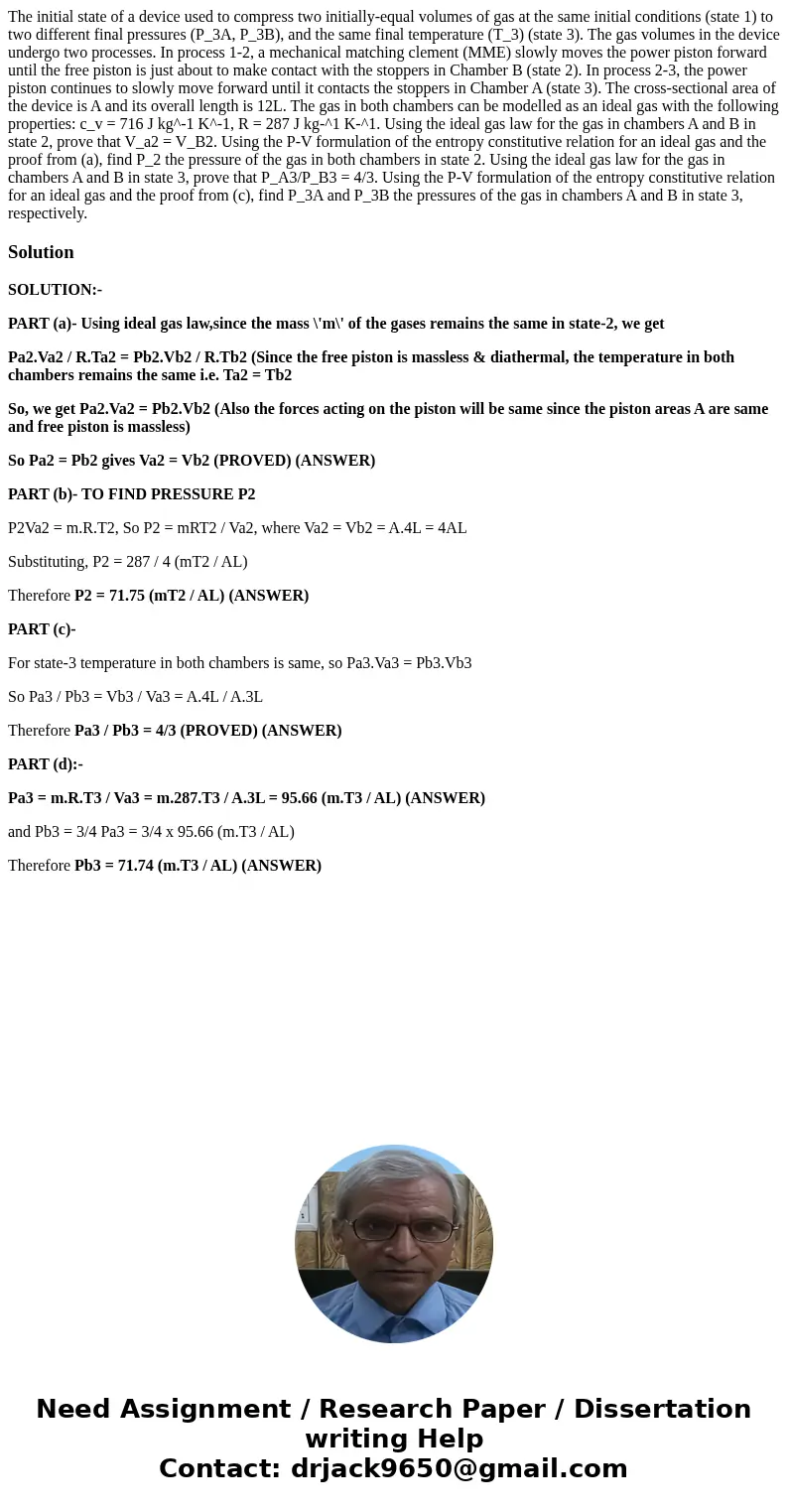The initial state of a device used to compress two initially-equal volumes of gas at the same initial conditions (state 1) to two different final pressures (P_3A, P_3B), and the same final temperature (T_3) (state 3). The gas volumes in the device undergo two processes. In process 1-2, a mechanical matching clement (MME) slowly moves the power piston forward until the free piston is just about to make contact with the stoppers in Chamber B (state 2). In process 2-3, the power piston continues to slowly move forward until it contacts the stoppers in Chamber A (state 3). The cross-sectional area of the device is A and its overall length is 12L. The gas in both chambers can be modelled as an ideal gas with the following properties: c_v = 716 J kg^-1 K^-1, R = 287 J kg-^1 K-^1. Using the ideal gas law for the gas in chambers A and B in state 2, prove that V_a2 = V_B2. Using the P-V formulation of the entropy constitutive relation for an ideal gas and the proof from (a), find P_2 the pressure of the gas in both chambers in state 2. Using the ideal gas law for the gas in chambers A and B in state 3, prove that P_A3/P_B3 = 4/3. Using the P-V formulation of the entropy constitutive relation for an ideal gas and the proof from (c), find P_3A and P_3B the pressures of the gas in chambers A and B in state 3, respectively.
SOLUTION:-
PART (a)- Using ideal gas law,since the mass \'m\' of the gases remains the same in state-2, we get
Pa2.Va2 / R.Ta2 = Pb2.Vb2 / R.Tb2 (Since the free piston is massless & diathermal, the temperature in both chambers remains the same i.e. Ta2 = Tb2
So, we get Pa2.Va2 = Pb2.Vb2 (Also the forces acting on the piston will be same since the piston areas A are same and free piston is massless)
So Pa2 = Pb2 gives Va2 = Vb2 (PROVED) (ANSWER)
PART (b)- TO FIND PRESSURE P2
P2Va2 = m.R.T2, So P2 = mRT2 / Va2, where Va2 = Vb2 = A.4L = 4AL
Substituting, P2 = 287 / 4 (mT2 / AL)
Therefore P2 = 71.75 (mT2 / AL) (ANSWER)
PART (c)-
For state-3 temperature in both chambers is same, so Pa3.Va3 = Pb3.Vb3
So Pa3 / Pb3 = Vb3 / Va3 = A.4L / A.3L
Therefore Pa3 / Pb3 = 4/3 (PROVED) (ANSWER)
PART (d):-
Pa3 = m.R.T3 / Va3 = m.287.T3 / A.3L = 95.66 (m.T3 / AL) (ANSWER)
and Pb3 = 3/4 Pa3 = 3/4 x 95.66 (m.T3 / AL)
Therefore Pb3 = 71.74 (m.T3 / AL) (ANSWER)

 Homework Sourse
Homework Sourse